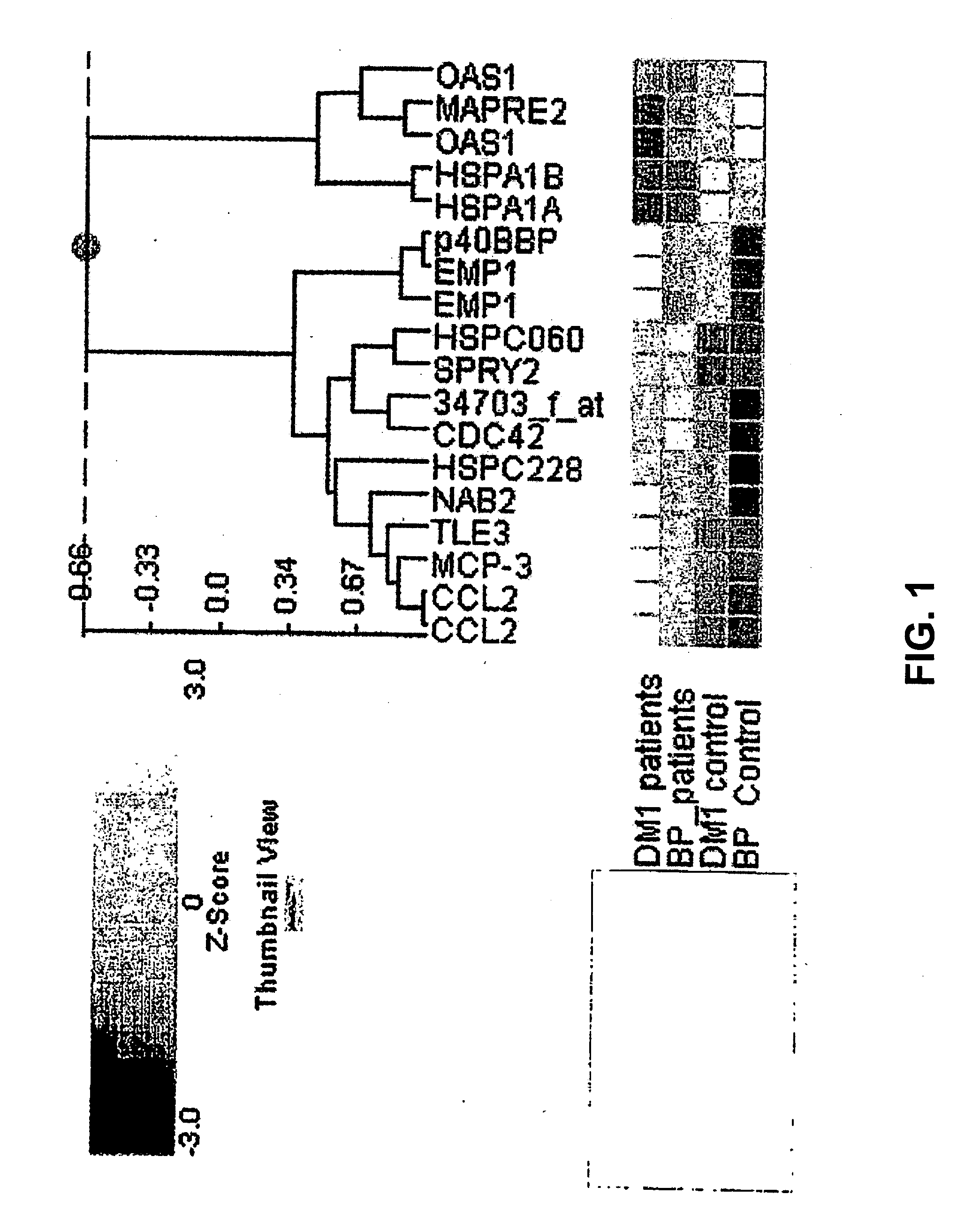Method to diagnose or screen for inflammatory diseases
a technology for inflammatory diseases and diagnosis, applied in the field of medical diagnostics, can solve the problems of difficult treatment of immune-mediated disorders, difficult to diagnose immune-mediated disorders, and early phase of disease may be a frustrating time for both patients and physicians, and achieve the effect of increasing the risk of developing
- Summary
- Abstract
- Description
- Claims
- Application Information
AI Technical Summary
Benefits of technology
Problems solved by technology
Method used
Image
Examples
example 1
Identification of Inflammatory Disease Markers
Experimental Procedures
Subjects
[0047] Peripheral, blood mononuclear cells (PBMCs) were isolated from heparinized peripheral blood using Ficoll-Paque (Amersham Biosciences, Uppsala, Sweden) density gradient centrifugation, resuspended in RPMI1640 medium containing HEPES and ultraglutamin supplemented with 10% fetal calf serum and 10% DMSO, and stored at −180° C. providing a bank for experiments. This study was approved by the Medical Ethical Committee of the Erasmus MC, Rotterdam, The Netherlands. All subjects provided written informed consent prior to participation.
[0048] At the start of an experiment, the PBMCs were quickly thawed and pooled into patient samples or control samples to minimize individual variations. Seven Bipolar Disorder (BP) patients were pooled into BP samples (two different pools; mean age 42.1 years), seven healthy controls for BP patients (CoBP; sex- and age-matched) into CoBP samples (two different pools). ...
example 2
Identification of BP Marker Genes
[0055] In this example, genes were identified that were specifically up- or down-regulated in both adolescent and juvenile patients with bipolar disorder (BP) who did not receive lithium therapy. The BP subjects investigated and their age- and sex-matched controls were as follows:
[0056] BP female 31 years versus control female 31 years; BP male 36.4 years versus control male 39 years. In addition, four children from parents with BP were investigated. At the onset of the study, these children did not display symptoms of BP. However, during the course of the study, they all developed BP. Thus, the genetic data obtained from these children at the beginning of the study can be regarded as “pre-bipolar.” The BP children and their age- and sex-matched controls were as follows: BP boy 11.7 years versus control boy 16 years; BP girl 12.2 years versus control boy 12 years; BP boy 16.1 years versus control boy 16 years and BP boy 20 years versus control boy...
PUM
| Property | Measurement | Unit |
|---|---|---|
| affective disorder | aaaaa | aaaaa |
| length | aaaaa | aaaaa |
| physical examination | aaaaa | aaaaa |
Abstract
Description
Claims
Application Information
 Login to View More
Login to View More - R&D
- Intellectual Property
- Life Sciences
- Materials
- Tech Scout
- Unparalleled Data Quality
- Higher Quality Content
- 60% Fewer Hallucinations
Browse by: Latest US Patents, China's latest patents, Technical Efficacy Thesaurus, Application Domain, Technology Topic, Popular Technical Reports.
© 2025 PatSnap. All rights reserved.Legal|Privacy policy|Modern Slavery Act Transparency Statement|Sitemap|About US| Contact US: help@patsnap.com


